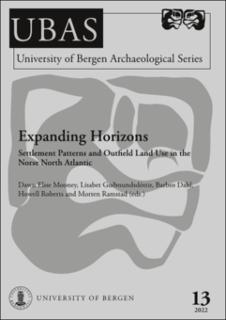Settlement and subsistence strategies in western Norway: examples from two deserted medieval farms
Chapter
Published version

Åpne
Permanent lenke
https://hdl.handle.net/11250/3052589Utgivelsesdato
2022Metadata
Vis full innførselSamlinger
Originalversjon
In: Mooney, D. E., Guðmundsdóttir, L., Dahl, B., Roberts, H. & Ramstad, M. (eds.), Expanding Horizons : Settlement Patterns and Outfield Land Use in the Norse North Atlantic, 129-152.Sammendrag
Two deserted medieval farms are investigated: the coastal Høybøen farm, located on an island on the western coast of Norway, and the inland Hellaug farm located in an upland but low-lying mountain valley. Both farms were settled during the Viking Age and abandoned during the Late Middle Ages. Abandoned Medieval farms have traditionally been perceived as less well-off than central contemporary farms. They have often been characterized as marginal, especially with regard to agrarian conditions. However, little is known about their subsistence strategies and whether they were sustainably farmed for several hundred years before they were abandoned. This paper discusses social aspects of farm establishment, the settlement basis, and land-use practices at the Høybøen and Hellaug farms by using archaeological and botanical sources. Both farms were settled during a time when the areas became more intensively used by neighboring farms. The farms were likely subordinated to a main farm and the people working the newly established farms were tenants. The subsistence strategies were based on the infield-outfield system, but the economic basis of both farms mainly came from outland resources where available pastures were especially important. The combined source material shows that the farms participated in different cultural and economic networks.